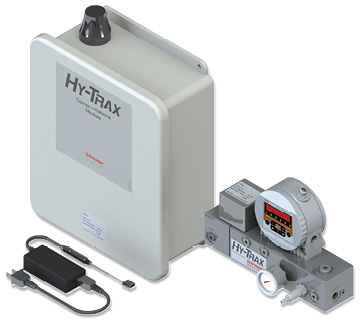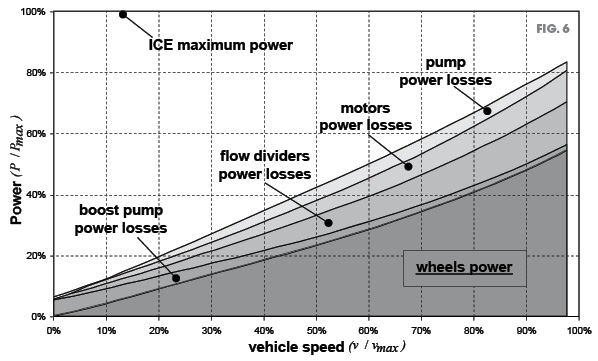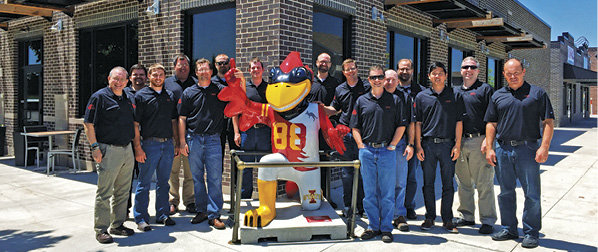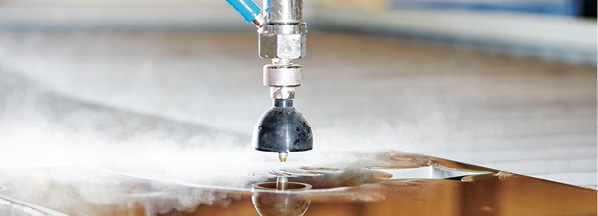Self-Cleaning Filter Eliminates Downtime for Sausage Co-Packer
By James D. Lago, sales manager for the North-Midwest region at Eaton’s Filtration Division

Chances are the pork sausage on your breakfast plate came home from the grocery store frozen-food section. If it’s one of the big-name brands, chances are equally good that it was not processed by the company whose name is on the package but by a co-packer – a company that specializes in that particular product.
One of the larger co-packers in the Midwest produces tons of frozen pork sausage every day in a continuous process that includes blending the meat and spices, stuffing the casings or forming the patties, cooking the sausages, and finally freezing the ready-to-eat product. That final critical step is accomplished in a sophisticated waterfall pouch chiller using a food-grade propylene glycol/water mixture at -5° F (-21° C).
Because the glycol/water mixture can come into physical contact with the product, and because nothing is perfect – including packaging – the chiller is equipped with bottom-mounted screens to catch any bits of sausage or packaging materials that may get into the liquid and keep them out of the heat exchangers. This function is critical to the process because the glycol/water mixture must be maintained within a narrow temperature range to meet strict food-safety regulations.
If the screens become clogged, the flow of glycol/water through the heat exchangers is reduced, and the temperature in the processing area rises. If the temperature exceeds food-safety guidelines, then the entire batch of sausage and the potentially contaminated glycol/water mixture would have to be discarded or “reworked” if damage was minor.
“That happened two or three times a year on average,” said Jeff Simpson, a fluid process and industrial wastewater engineer at Crane Engineering in Kimberly, Wisconsin. “The cost of replacing the process fluid alone was about $20,000 per incident.
Additionally, maintenance costs were running in the $40,000 to $60,000 range per year, and they still weren’t preventing the over-temperature incidents.
The customer was walking a fine line between the cost of labor and downtime to clean the screens and sumps, and the cost of lost production while the chiller was out of operation being cleaned.
While the situation clearly called for a more effective filtration system, handling the 1,000 GPM
(227 m³/h) flow of glycol/water through the system presented an unusual challenge. That challenge was made even more difficult by the customer’s request for a solution that did not require the system to be shut down for filter maintenance.
The standard alternatives were either a multifilter system with enough extra capacity to handle the flow while one of the filters was offline for maintenance or a self-cleaning filter that didn’t require downtime for maintenance. While the self-cleaning filter offered significant cost benefits, the volume of glycol/water that had to be filtered was greater than the capacity of then-available standard models.
 “We decided to pursue the self-cleaning alternative,” Simpson said, “and to prove the concept we installed an Eaton DCF-800 self-cleaning filter on a side stream. That particular filter is rated for 60 GPM (13.5 m³/h), and in several months of operation at maximum flow it never clogged or required any maintenance.”
“We decided to pursue the self-cleaning alternative,” Simpson said, “and to prove the concept we installed an Eaton DCF-800 self-cleaning filter on a side stream. That particular filter is rated for 60 GPM (13.5 m³/h), and in several months of operation at maximum flow it never clogged or required any maintenance.”
The DCF filter consists of a cylindrical stainless steel housing that holds a filter element. Fluid enters inside the element and flows through it to the outlet, depositing any contaminants on the inside wall of the element.
A spring-loaded cleaning disc moves up and down, wiping the filter element clean and depositing the contaminants at the bottom of the housing, out of the flow path. This prevents a resuspension. Standard cleaning frequency can be based on time, differential pressure, manual selection, or any other application-specific criteria. Because it remains in service while being cleaned, the DCF filter satisfied the customer’s no-maintenance-downtime requirement.
“With the concept proven, the next hurdle was finding a self-cleaning filter with enough capacity to handle the full 1,000 GPM (227 m³/h) flow of glycol/water in the system,” Simpson said. “Through our contacts with Eaton, we knew they were working on a larger version of the DCF series, and this application was a perfect fit for that unit.”
Crane was able to procure one of the first of the new Eaton DCF-3000 filters produced and installed it in the co-packer’s chiller circuit. All components in contact with the product are made of stainless steel and the filter is rated at 1,100 GPM (250 m³/h) while filtering up to 100 microns. It stands 8 feet (2.40 meters) tall and weighs approximately 720 pounds (325 kilograms) when fully flooded. It can be equipped with slotted wire strainer elements ranging from 50 to 1,140 microns to meet a broad range of application requirements.
The unit installed on the co-packer’s chiller uses a 75-micron strainer to provide minimum flow restriction. The output is then routed through an Eaton FLOWLINE stainless steel bag filter housing with a 10-micron needle felt bag filter for the final cleaning before entering the heat exchanger.
“The first Eaton DCF-3000 filter ran for 3.5 years with no maintenance and no downtime,” Simpson said. “The customer still uses the screens at the bottom of the chiller to backstop the system, but they no longer plug up because the DCF-3000 filter keeps the entire glycol/water stream so clean.”
“Based on that performance, the customer has since installed DCF-3000 filters on similar systems in two of their other packing plants,” Simpson concluded. “Right now we are talking to them about a corporate back-up filter as a plug-and-play solution for any future downtime once the DCF-3000 filters now in service eventually require some maintenance.”







